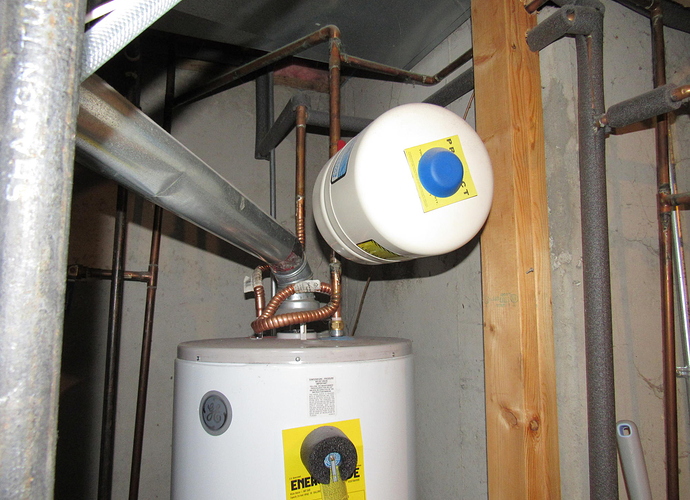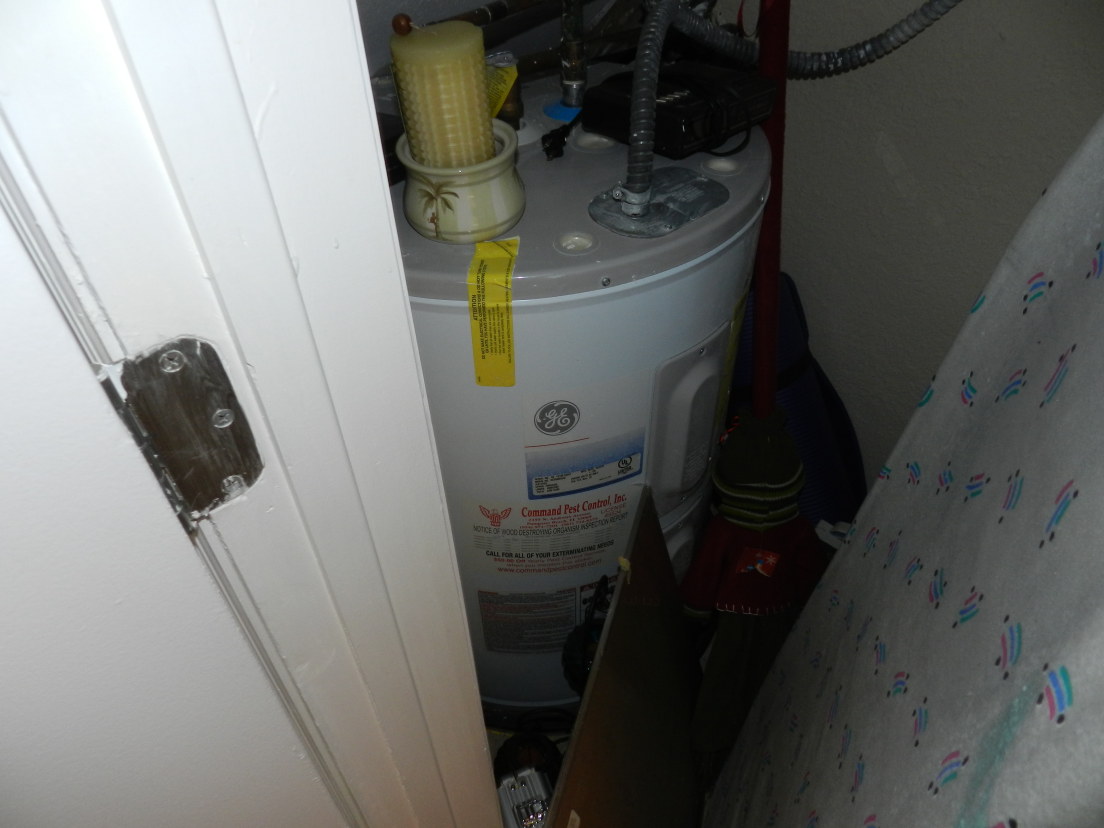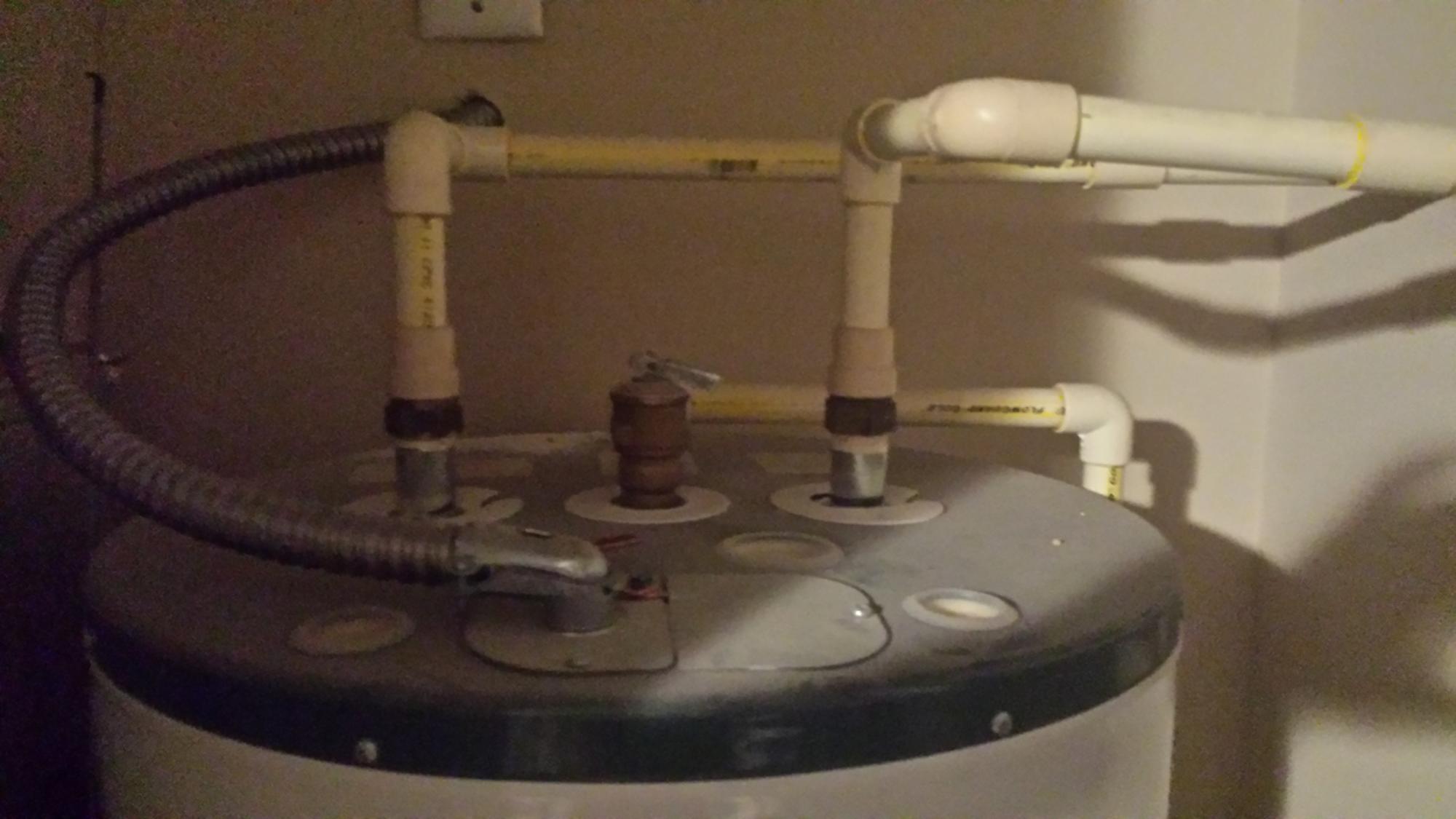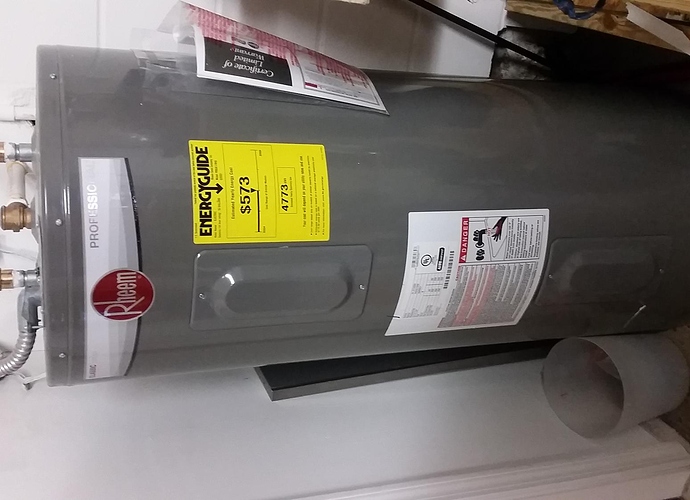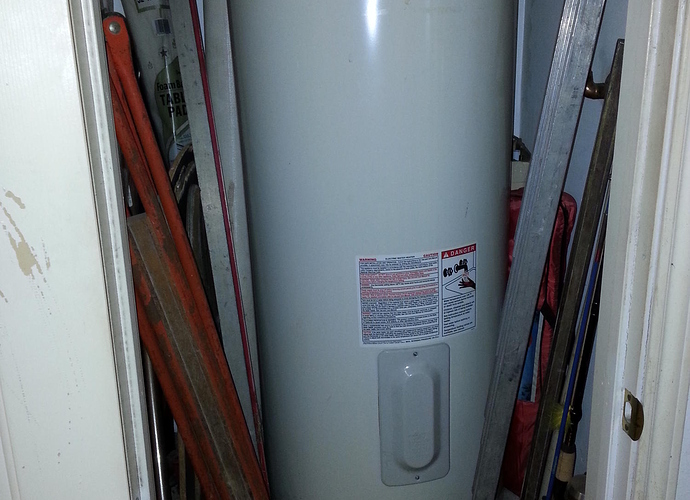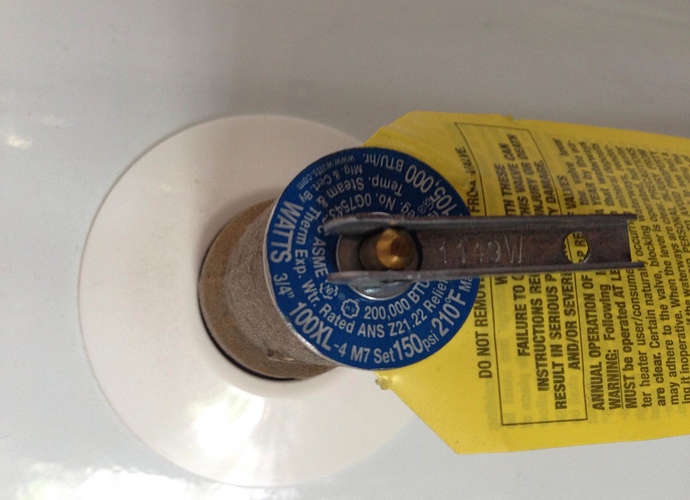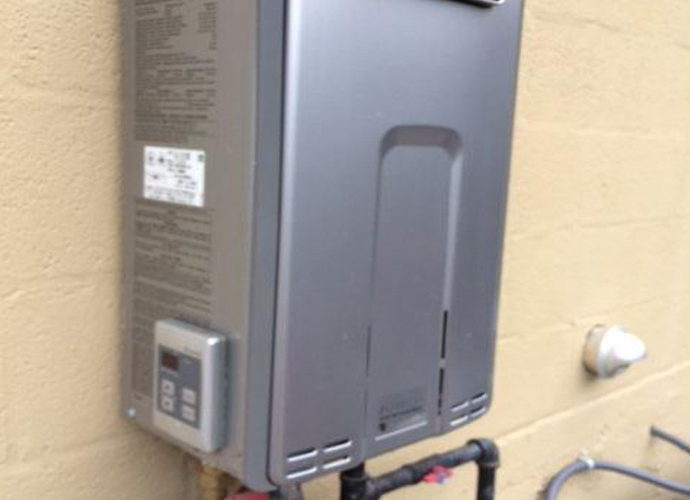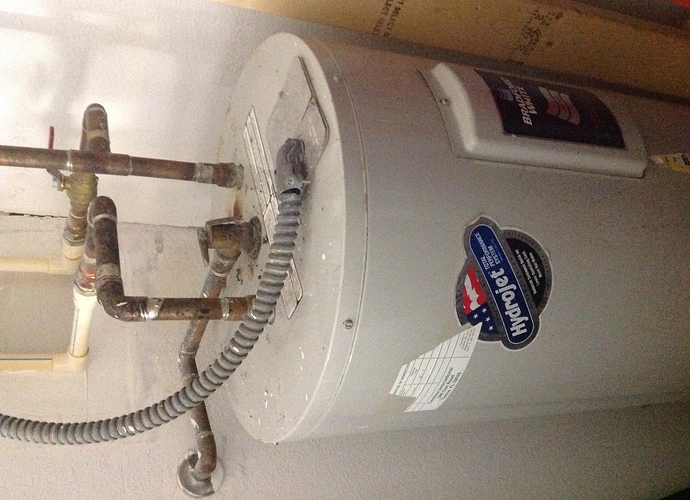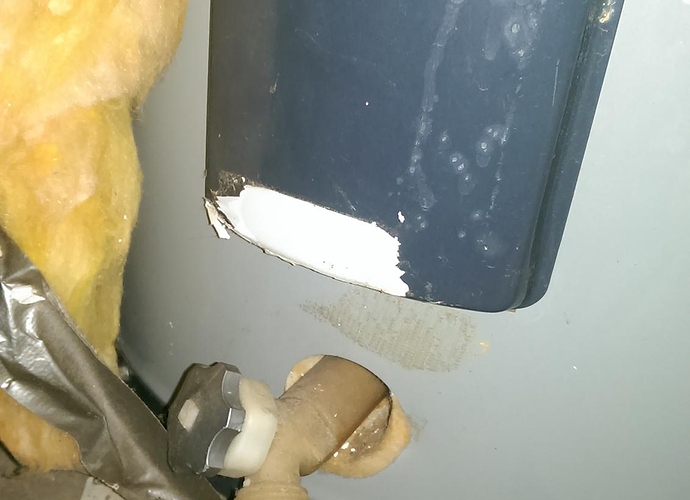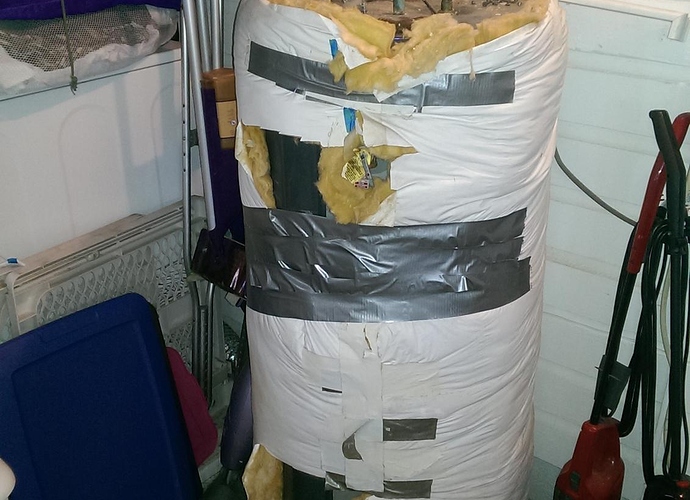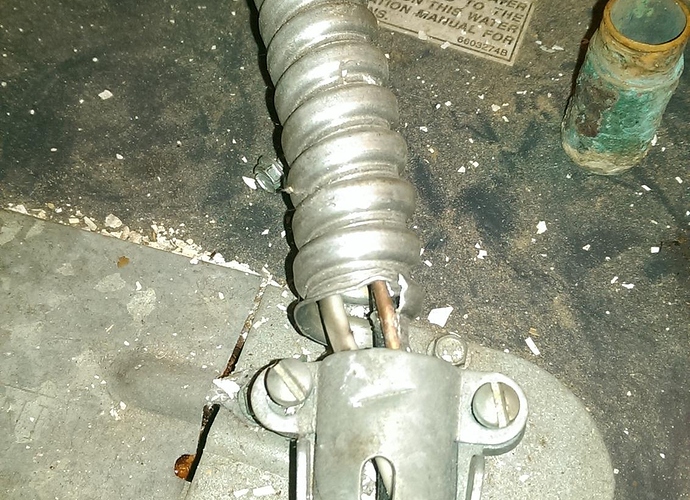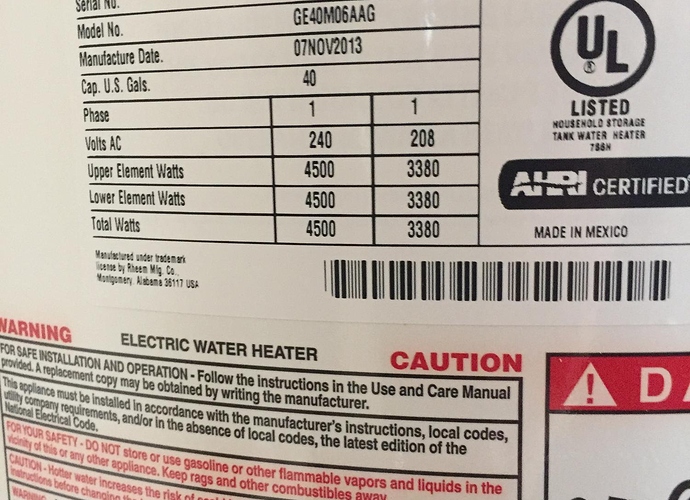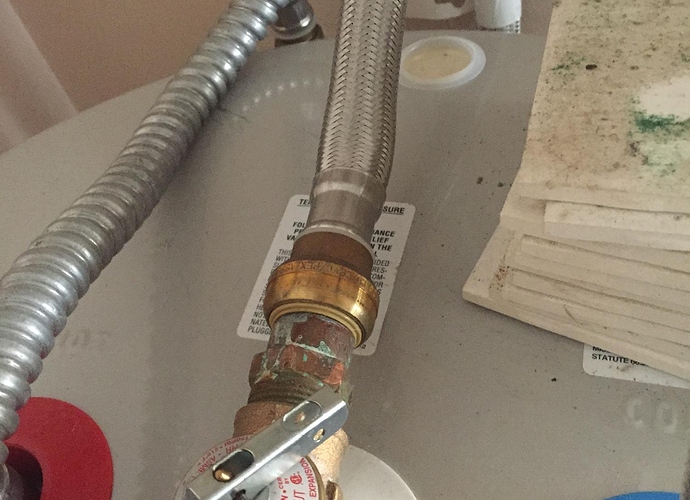A horizontal expansion tank that is missing the support strap.
Below is a photo submitted for the Water Heater portion of the pre-licensing portion. This water heater is from a property in east pompano beach, fl. The water heater is currently five years old and is in satisfactory condition. Thank You.
This shows an electric water heater in a florida home. Everything is in proper working condition. The tpr valve is located on top of the unit and is lead through pvc piping to proper drainage. The water shutoff valve is present with a ball valve. The drip pan at the bottom of the unit also is lead with pvc piping to proper drainage.
This shows an electric water heater in Florida. The TPR valve is attached to PVC piping that is extended and pointing straight down. Also the shut off value is close to the water heater and very accessible. This water heater also contains the correct labeling and shows no signs of defect.
The electric hot water heater is approximately 6 years old. It is located in a garage closet and elevated 18 inches from the floor. It is deficient in the fact that it does not have drip pan at the bottom and drained to the exterior.
Article: Water Heater Expansion Tanks
In this article I learned that expansion tanks are used to accumulate fluctuations within the homes heating system. The expansion tanks in a sense take some stress off of the water heaters themselves by taking some the the contraction of the hot water. Expansion tanks also are very flexible in the ways that they could be hung or attached.
Pressure expansion tanks are a cylindrical tank mounted to the cold water side of a tank heating system. They can be attached to the system either vertically or horizontally, but if horizontal they will require additional support to prevent pipe stress. This tank has a bladder inside to help with water expansion in a closed water distribution system. They hold two to three gallons of water and pressurized with about 40 PSI of air pressure.
Below is a photo of a TPR valve . The valve is free of corrosion . The valves label is still intact and readable. The valve is installed in the top 6" of the tank.
I read the article titled Water heater Expansion Tanks. They appear to not be required in the area I live (West Central Florida) as I have never seen one installed before. Because we preform safety inspections and not code inspections , would it be prudent to recommend one be installed?
Here is the tankless water heater a the exterior of my building. The energy used is natural gas, and it appears to be in good condition.
This was a fantastic class. I really loved the craftsman point of review, which reinforced the material. The pictures, commentary and videos from actual inspections were great.
For an image I took a picture of a hot water heater in my house. Upon taking I realized that the TPR isn’t draining to a conspicuous place. In fact, I can’t find where it terminates but believe it goes outside. It’s night time so I’m not going on an expedition mission. I will tomorrow though. There is also no catch pan. Ugh! The inspector I had didn’t mention either in his report. I wish I would’ve taken this course earlier.
Based on what I have learned from this course I would have listed serious concerns on my water heater. The TPR valve is piped to un inconspicuous area. There is no catch pan. The age and other pertinent information isn’t readily available on the hot water heater. There are no obvious leaks or corrosion.
I found the hot water heater dating charts article very informative. I live in an established area with many old homes. Being able to “crack the code” for any model information I can glean from the equipment will be helpful. I also was able to review the expansion tank article. In that I picked up that it needed to be high enough to drain back in the heater tank. That is something that I didn’t pick up in the videos.
hey guys means of egress final was tougher than I expected. moving on to water heater tanks. Later
Water Heater Image
Ht water heater inspection
The hot water heater I inspected is located in the garage. it is an electric water heater. Covered in insulation, had to remove insulation in order to see water heater labeling. This heater has a lower quality plastic drain valve. Also found exposed wiring on the incoming power conduit.
Just finished going through the ‘water heater dating chart’ in the ‘library of inspection Articles’ section. This was a very informative and handy chart to have. I downloaded it to my home inspection folder for future reference. Thanks for all the great information and resources.
Alan Roig
New Smyrna Beach, FL
No expansion tank but there are air chambers above.
No pipe out of TPR valve down to floor
2013 GE electric 40 gallon water heater(flammable vapor ignition resistant-FVIR) with a 500,000 BTU per hour 150 psi-210F rating. There are no leaks or rust detected. all components including the TPR valve and drain pipe are installed according to modern building standards.
My home:
8/4/2015
Single family residential unit
Inspector: Michael Kotcherha
Inspect: Water heater
Description: 2013 GE electric 40 gallon water heater -500,000 BTU per hour 150 psi- 210F rated with FVIR(flammable vapor ignition resistant).
Report : The water heater is located in the residents garage on a concrete slab 8 inches above the main slab of the garage. There are no signs of leaks or rust. The copper piping connecting the water heater to service is connected using Shark quick connect connectors to braided metal flexible piping(this may indicate an installation by the home owner). There is also a remote electrical service interrupter installed by the local electric company to save on electricity consumption. All components show no damage and are in compliance with modern building standards.
Recommend: All though there is no sign of leaking at the piping using quick connectors I would recommend a qualified plumber inspection.
